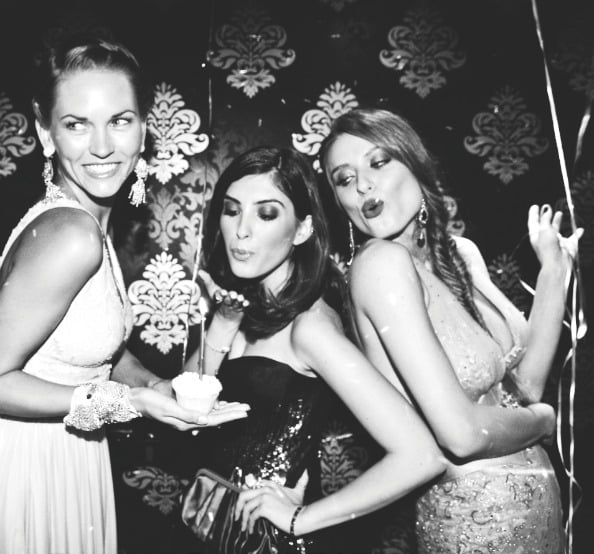You’d think that there’s no such thing as a friendship overload, but research shows that our brains are built for a very precise social set.
Aimlessly scrolling down Facebook, I came across a name I didn’t recognise. Strange for me, as I’ve never accepted a friend request from someone I don’t know. I clicked on the mysterious name and went through some profile pictures in the hope it would jog my memory. Nothing. We had friends in common, yet I couldn’t connect the dots. Had this person slipped through the net? Or in 2010, when we invited each other into our cyber lives, to see our meaningless status updates, holiday snaps and selfies, did we actually know each other.
Both accepting a random request and completely forgetting a face within four years seemed unlikely. Then I read about Dunbar’s Number and realised the answer was simple: I had too many friends.
According to anthropologist Robin Dunbar, the size of a species’ social group is directly related to brain size. Interestingly, he found that humans simply don’t have the brainpower to have as many friends as they like. There are only so many people that we can hold a meaningful relationship with at any one time. His studies led him to find that the size of a person’s set averages at around 150. This is roughly the number of people that an individual would be happy to invite to a large party, including friends, family and colleagues.
The more Dunbar looked, the more he saw this number cropping up everywhere. Historically, hunter-gatherer groups were capped at around 150. Modern villages, likewise. Even military companies seemed to recognise this as the magic number. And some of the best multinational companies will divide an office into two when employees creep over the 150 mark – a system famously implemented by Gore-Tex, who have over 9,500 staff and have won awards for employee satisfaction.
Though this magic number is quoted often, it’s not as static as many people think. There are, after all, different ways of categorising friends and acquaintances. This variable can be worked out using the rule of three. For example, most people will have 50 close friends or family members – close enough to invite over for dinner, but maybe not trusted confidants. Then there’s the inner 15, or the people you could call for help. And most important of all, are the five people that form your most intimate circle.
On the other hand, it’s possible for humans to cope with up to 500 acquaintances, or people we would say hello to if we walked past them in the corridor. But does social media allow us to stretch these numbers.
According to speaker and life coach Helga Marin, the answer is a firm no. In fact, it can actually shrink your circle of real friends. “Research has shown that in today’s society people are lonelier and more depressed than ever before despite having hundreds of friends via social platforms,” she says. “Humans are social beings who need to interact with each other in real life. So much of the communication between two people happens on a subconscious level. That doesn’t mean social media is bad, it just means that it can’t replace a real human interaction.”
So if we consider our social media relationships in relation to Dunbar’s Number, and Helga’s theory that we can’t use the internet to beat it, most of us should have between 150 and 500 Facebook friends. The lower end if we only accept real friends, and the higher end if we extend this to distant acquaintances. Over the seven years I’ve had Facebook, I’ve accumulated 620 friends. I decided to apply Dunbar’s Number to the list, and it was scarily accurate. Most intimate confidents: 6. Closest friends: 18. Outer circle: 148. Acquaintances: 491. That leaves me with an overflow of 129 people who have been on my outer circle at some stage, but I simply don’t know anymore. What’s even more alarming is, that somewhere in my seven years of friend requests, my brain has deleted three people from my memory.
Does this mean that Taylor Swift – who loves making friends so much she even invites her fans over to her house – is more intelligent than me? Or that Audrey Hepburn – one of the most famous loners of all time – had a smaller than average brain? Not likely. Some people prefer to keep their numbers tight, while those with more friends than hot dinners often change their outer layers of friends and acquaintances more regularly than others.
If people move between friendship levels constantly, some of them dropping by the wayside, it’s important to recognise that we can only cope with a certain amount. That makes it ever more important to invest time in those who really matter, and weed out the duds. Helga advises that we should regularly evaluate our relationships in order to make sure we don’t spread ourselves too thin. “A real friend is someone who empowers you, that you can count on and trust,” She explains. “Get rid of so called ‘friends’ who spend their time badmouthing other people, if they do it to other friends they are doing it to you as well.”
For me, that equals 129 people to remove from my Facebook friends list. As for the real world, I’m going to make a special effort to invest time with my magic number of special people. Dunbar was right – you’re only human. Sometimes you’ve just got to hit delete.
HOW TO CULL FRIENDS
Life coach Helga Marin says these are the questions you should ask yourself
- Does this person add to my life?
- Do I add to their life?
- How do they make me feel?
- How do I make them feel?
- Are they by my side during difficulties?
- Do I trust them?
- Do they empower me?













